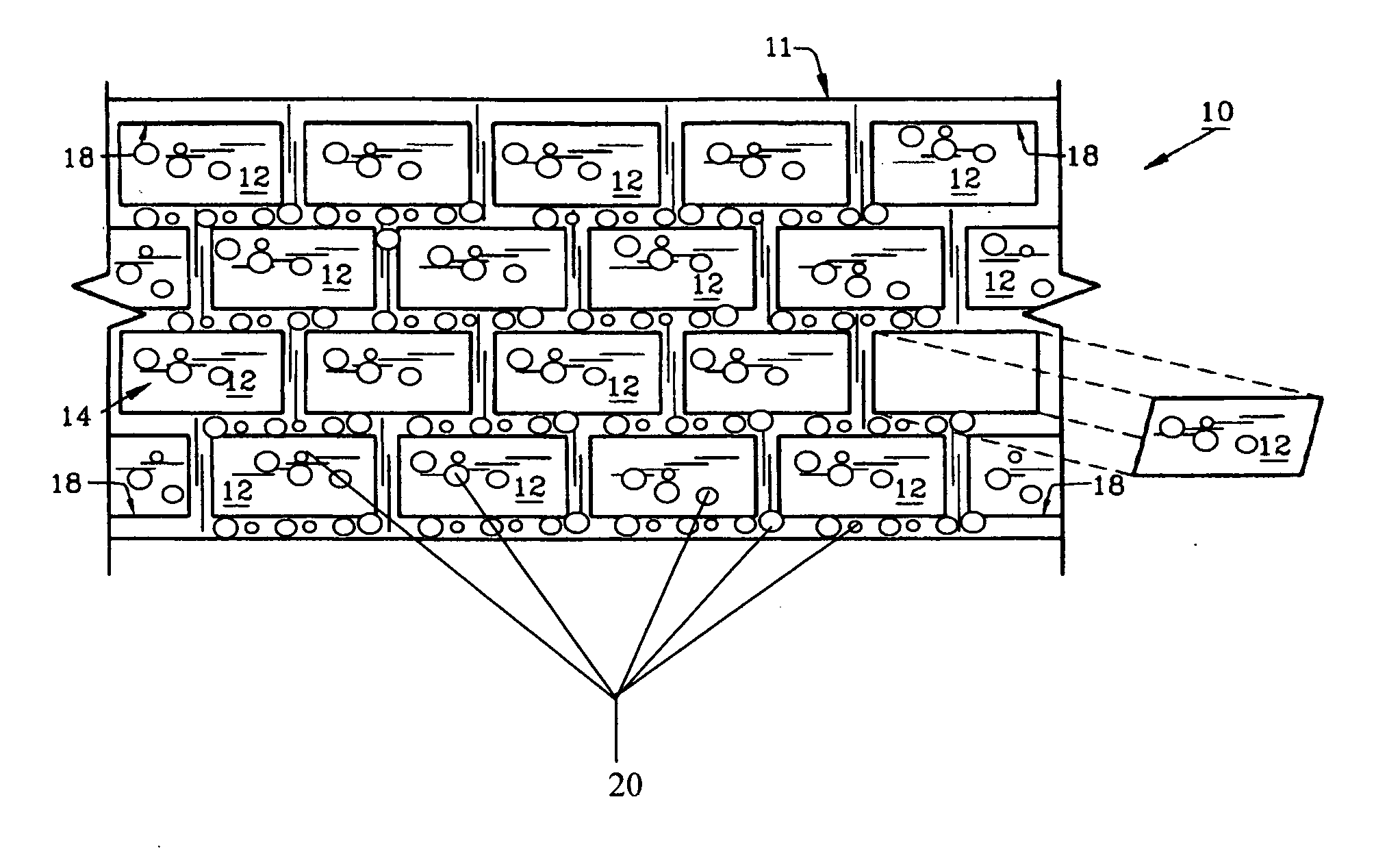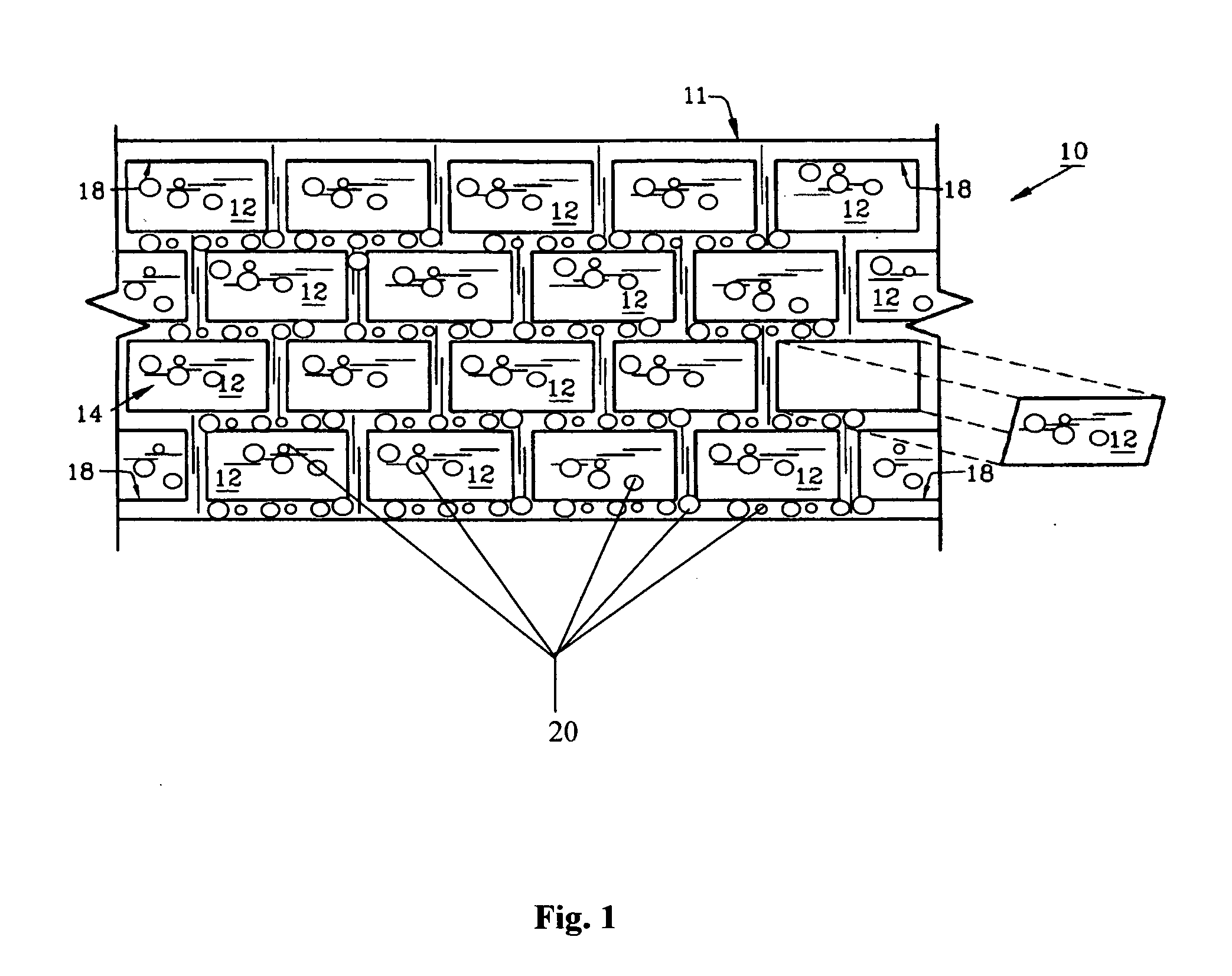Preformed thermoplastic pavement marking and method utilizing large aggregate for improved long term skid resistance and reduced tire tracking
a thermoplastic and aggregate technology, applied in the field of thermoplastic pavement marking materials, can solve the problems of not providing for measuring static cof values and not reflecting performance at high speeds, and achieve the effects of reducing tire tracking, saving time and labor, and improving the skid resistance properties of pavement markers
- Summary
- Abstract
- Description
- Claims
- Application Information
AI Technical Summary
Benefits of technology
Problems solved by technology
Method used
Image
Examples
working example 2
[0063]An example of preformed thermoplastic material based on an alkyd resin composition is provided as:
Material Composition for Working Example 2Polyamide resin Uni-Rez 26337.2%Modified rosin resin Sylvacote 49816.8%Phthalate plasticizer2.8%PE based wax2.0%Fumed silica0.5%Corundum grit 16 30%TiO2 10%CaCO340.7%
[0064]The material composition softening temperature (R&B) is 124° C.
[0065]The material composition was extruded, applied on cement boards, and tested similarly to the Example 1 except that corundum grit 24 was dropped on the surface during extrusion. The results are provided in Table 2 below:
TABLE 2DFT, F60, and MPD Values for Working Example 2Example 2DFT20F60MPD, mmAs Applied0.5170.2660.463After Abrasion0.7940.3790.51
working example 3
[0066]Alkyd type base layer for hot applied formulation
Modified rosin resin Sylvacote 4981 8%Modified rosin resin Sylvacote 7021 9%Castor oil based plasticizer 3%PE based wax2.0% Quartz mix with grit 12 to 20 gradation30%TiO210%CaCO338%
[0067]The material composition softening temperature (R&B) is 121° C.
[0068]The formulation, after mixing, provided 4-inch wide draw-down plaques. No anti-skid aggregate was applied to the surface of the plaques. While still warm and sufficiently flexible the draw-down plaques were applied to the cement boards covering the entire 20×20 inch area and creating sufficient space for testing, using CMT and DFT testers. One of the boards was tested after application and another after abrasion by sand blasting to expose intermix aggregate.
TABLE 3DFT, F60, and MPD Values for Working Example 3Example 3DFT20F60MPD, mmAs Applied0.150.130.34After Abrasion0.700.330.46
working example 4
[0069]An application of preformed thermoplastic insignia using adhesive backed preformed thermoplastic sheeting was also tested. Pressure sensitive adhesive (PSA) was applied to the sheets of material made according to the Example 2 and pre-cut in the shape of AASHTO approved letters. The letters were applied at the intersection to create a warning “STOP” sign using a READYMARK® tamper. The friction properties of these preformed thermoplastic sheets yielded results similar to the “as applied” properties presented in Example 2.
PUM
 Login to View More
Login to View More Abstract
Description
Claims
Application Information
 Login to View More
Login to View More - R&D
- Intellectual Property
- Life Sciences
- Materials
- Tech Scout
- Unparalleled Data Quality
- Higher Quality Content
- 60% Fewer Hallucinations
Browse by: Latest US Patents, China's latest patents, Technical Efficacy Thesaurus, Application Domain, Technology Topic, Popular Technical Reports.
© 2025 PatSnap. All rights reserved.Legal|Privacy policy|Modern Slavery Act Transparency Statement|Sitemap|About US| Contact US: help@patsnap.com


